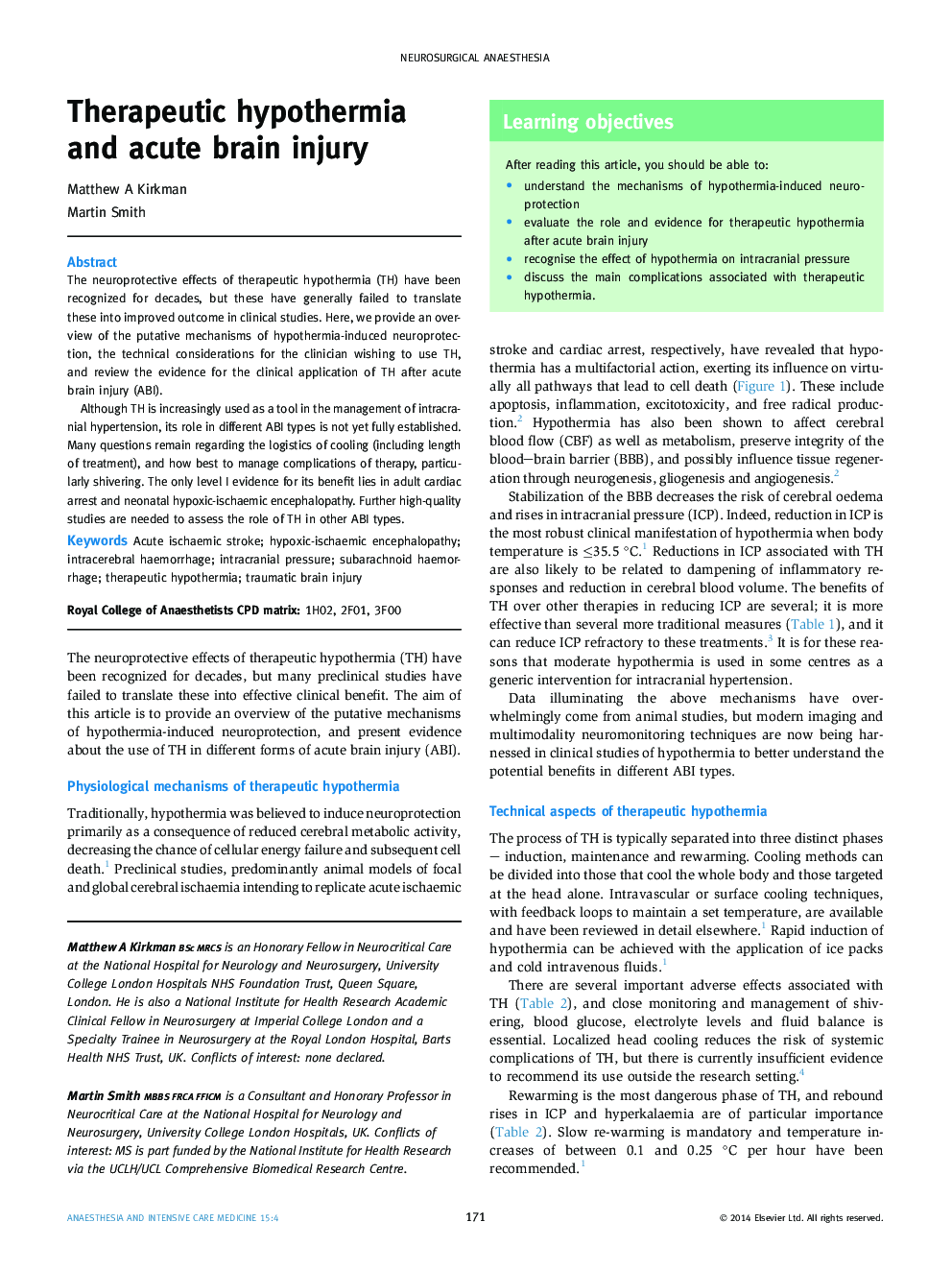| Article ID | Journal | Published Year | Pages | File Type |
|---|---|---|---|---|
| 2742376 | Anaesthesia & Intensive Care Medicine | 2014 | 5 Pages |
The neuroprotective effects of therapeutic hypothermia (TH) have been recognized for decades, but these have generally failed to translate these into improved outcome in clinical studies. Here, we provide an overview of the putative mechanisms of hypothermia-induced neuroprotection, the technical considerations for the clinician wishing to use TH, and review the evidence for the clinical application of TH after acute brain injury (ABI).Although TH is increasingly used as a tool in the management of intracranial hypertension, its role in different ABI types is not yet fully established. Many questions remain regarding the logistics of cooling (including length of treatment), and how best to manage complications of therapy, particularly shivering. The only level I evidence for its benefit lies in adult cardiac arrest and neonatal hypoxic-ischaemic encephalopathy. Further high-quality studies are needed to assess the role of TH in other ABI types.
